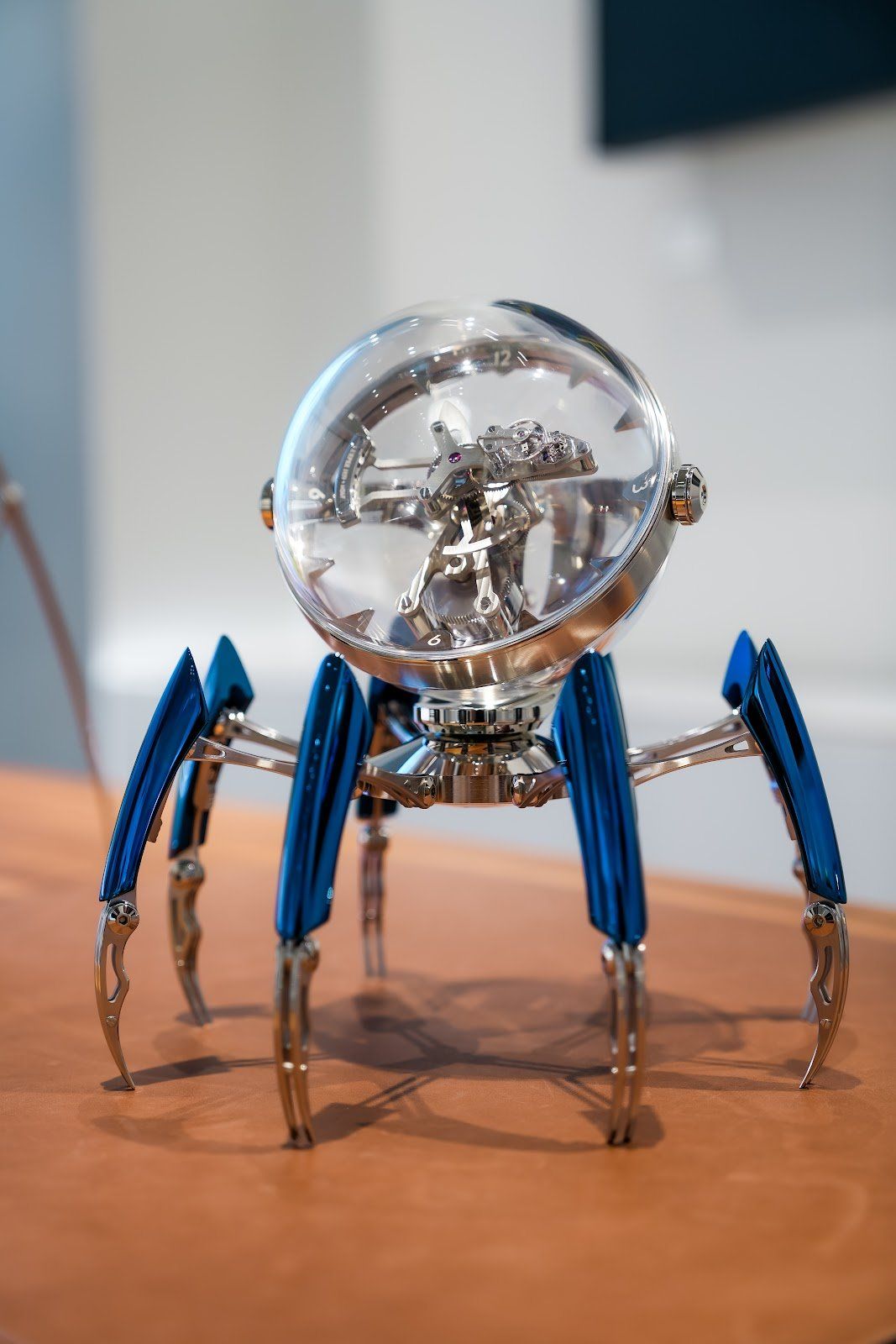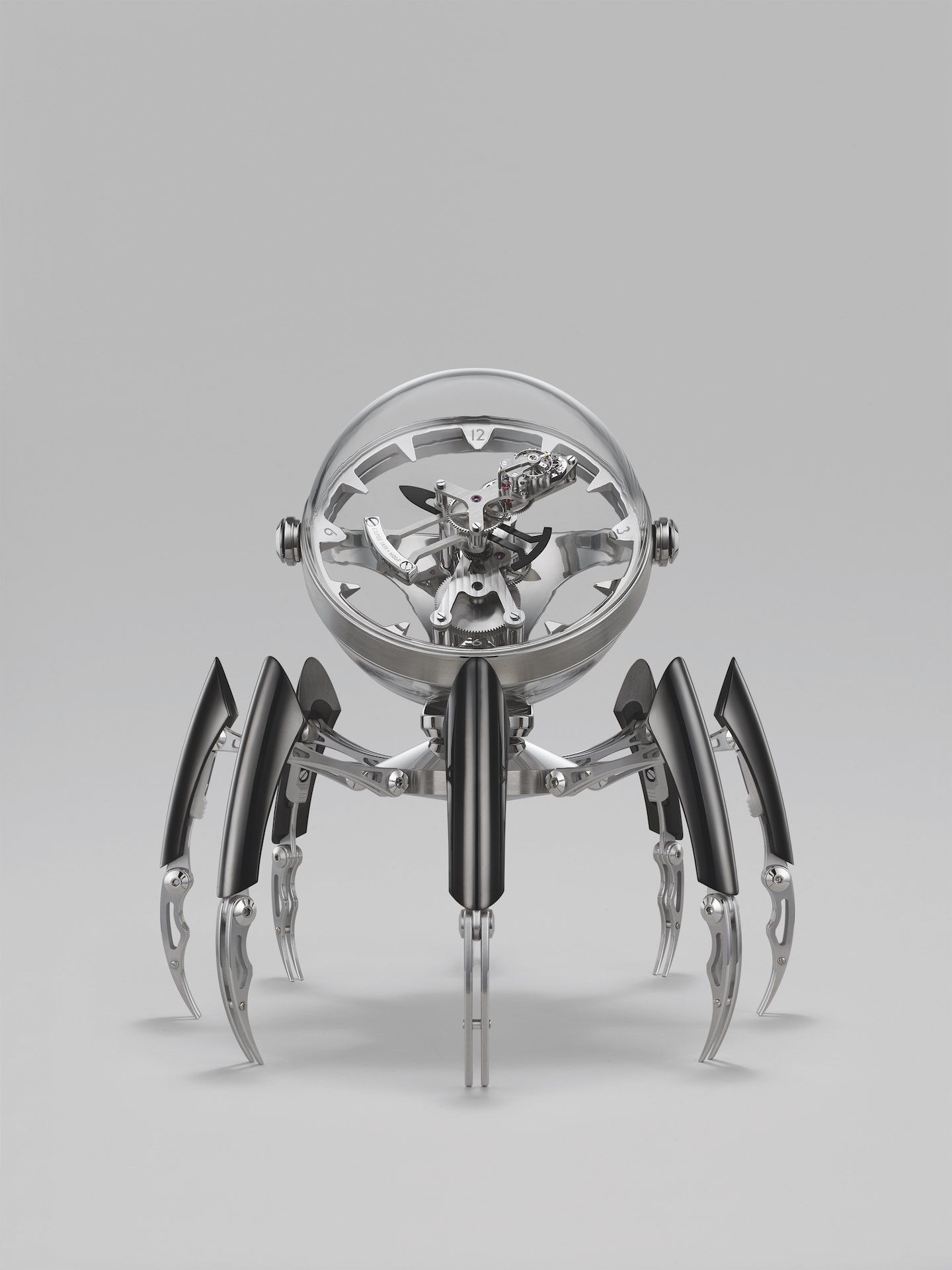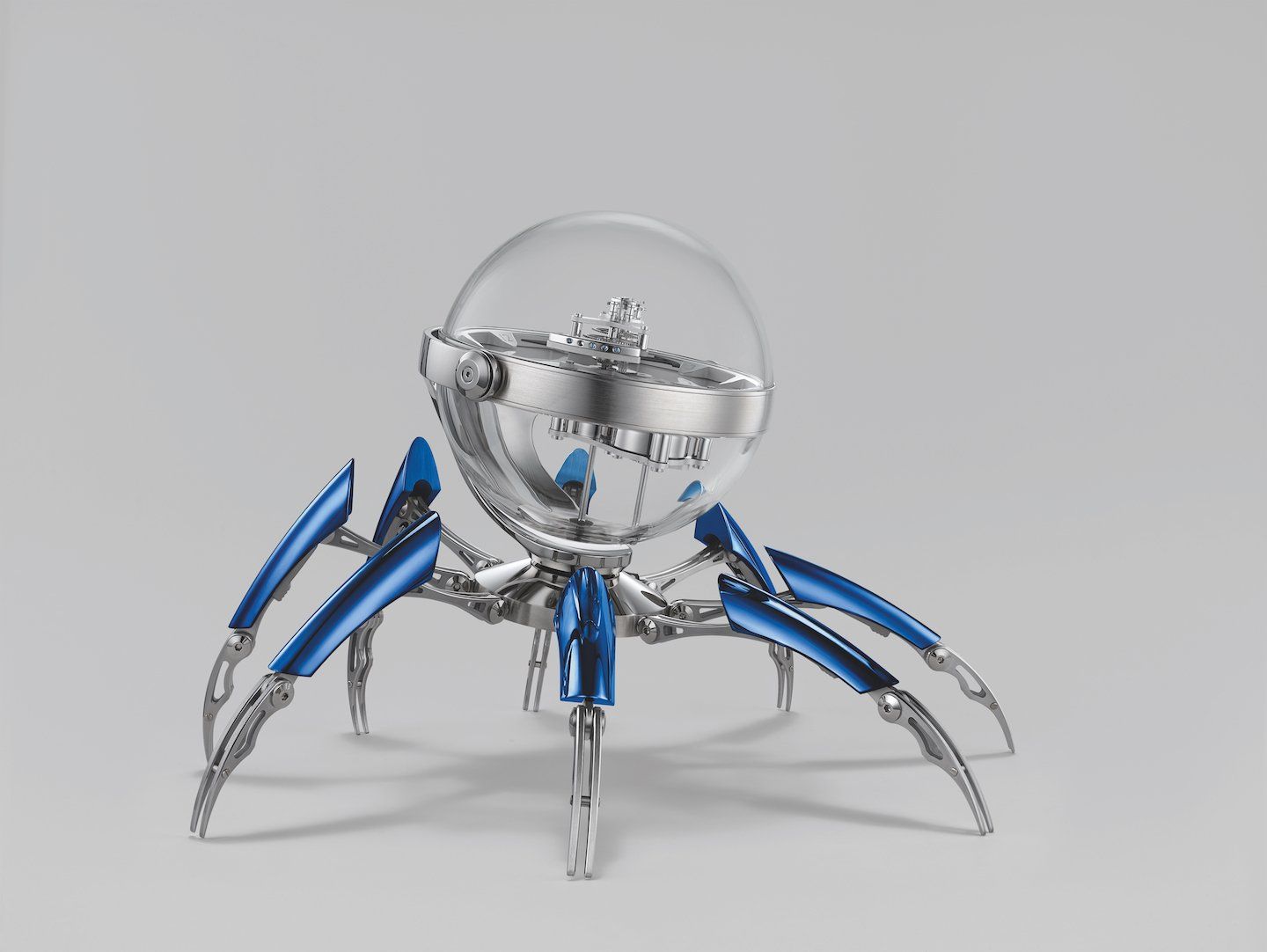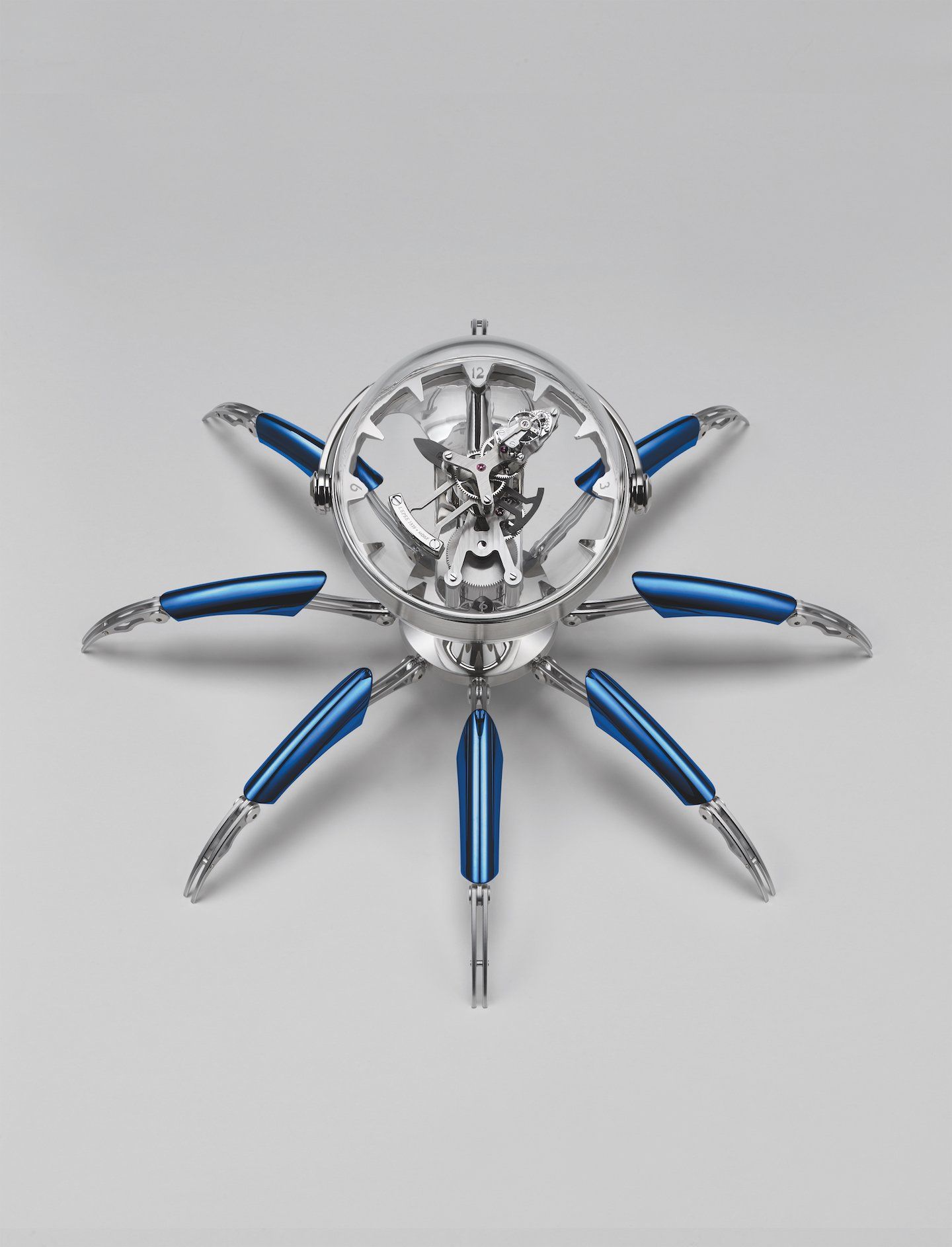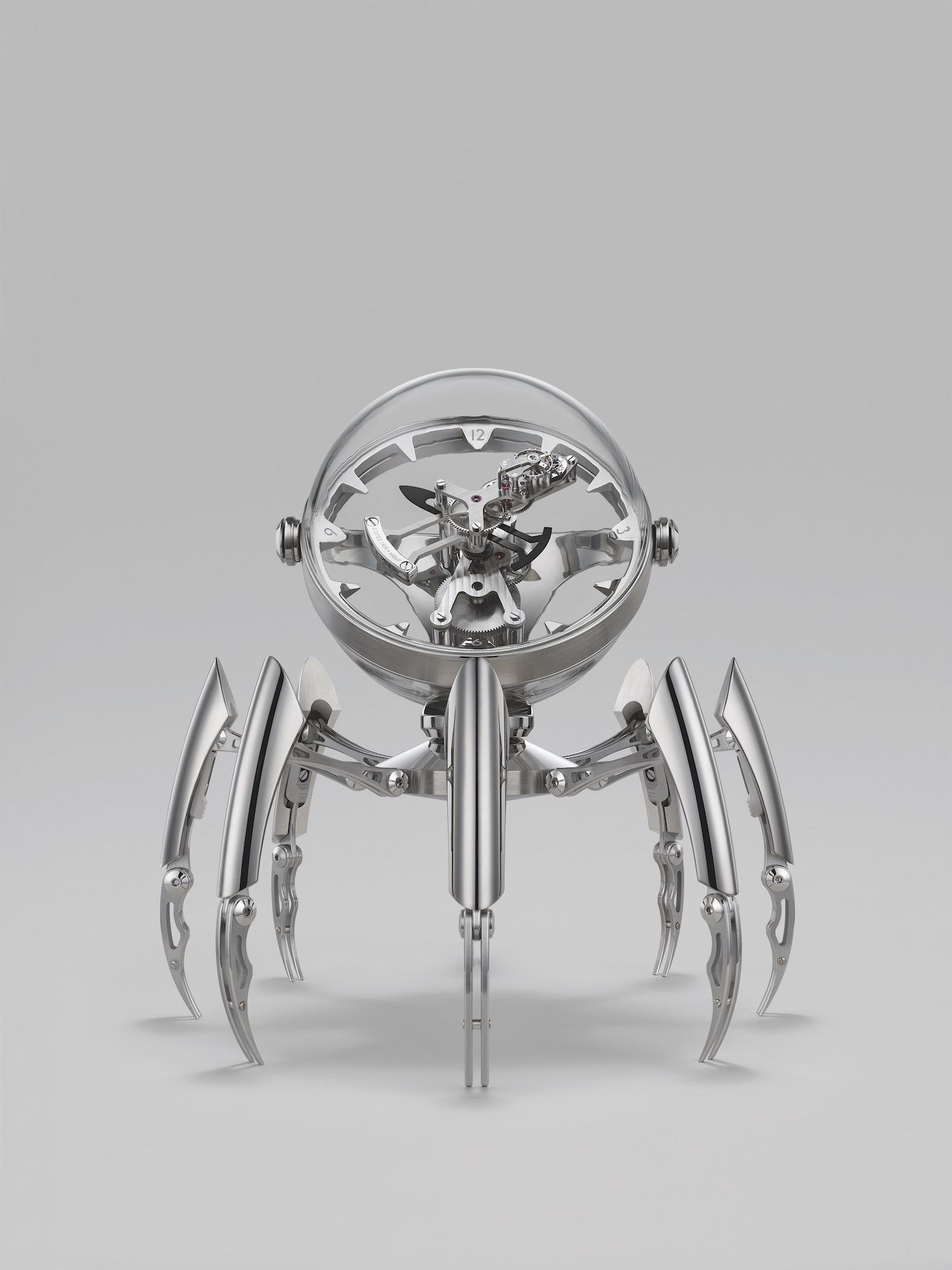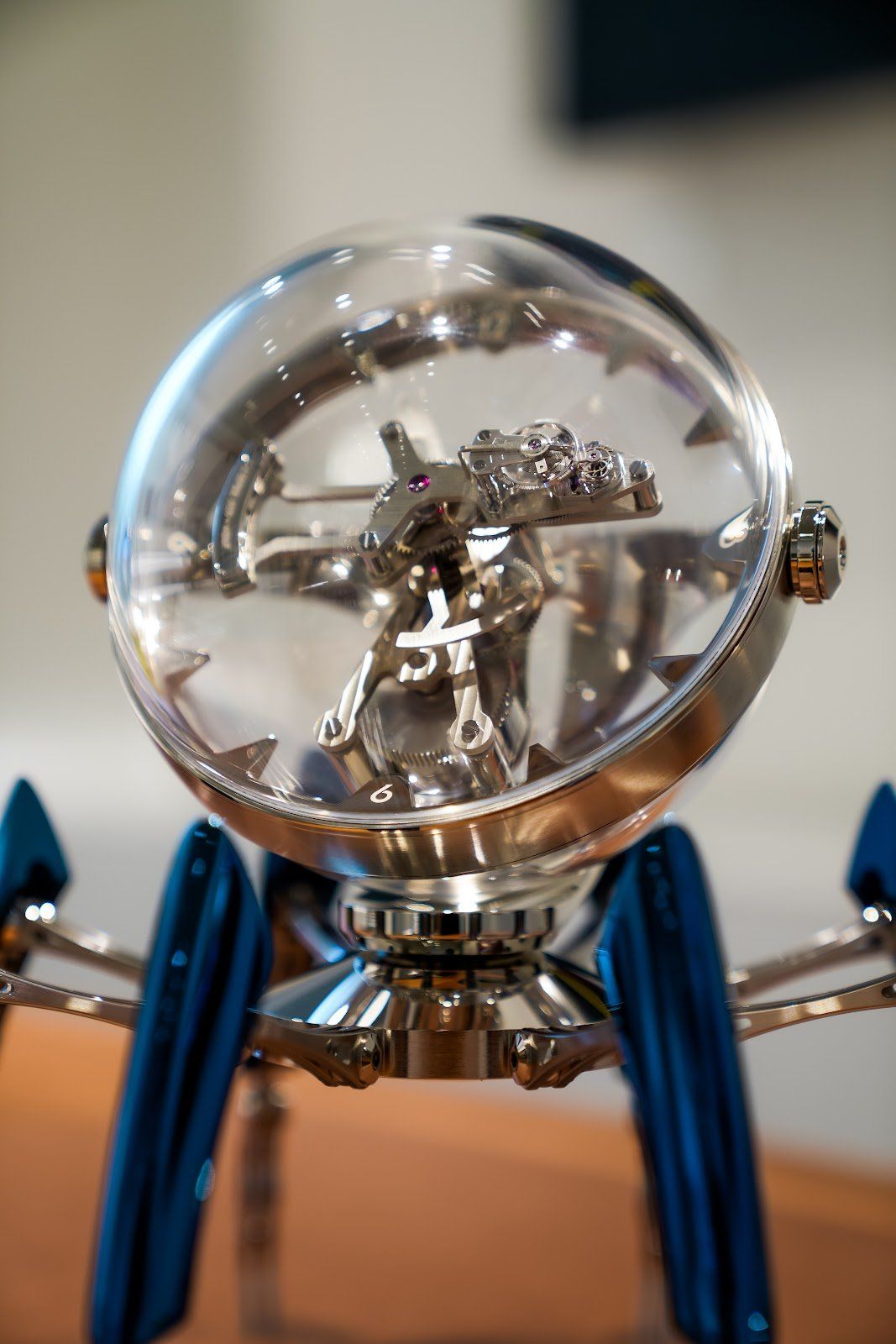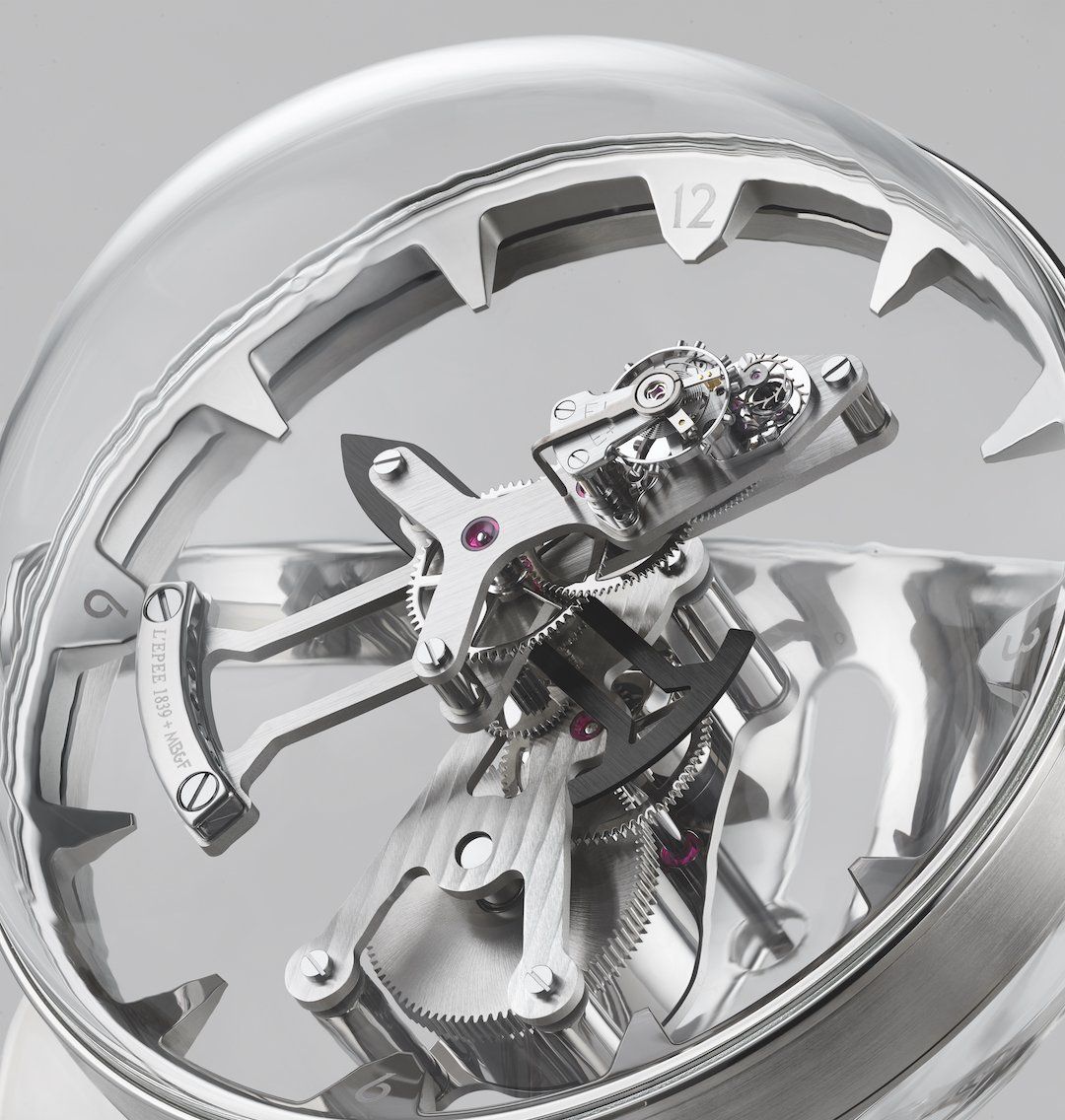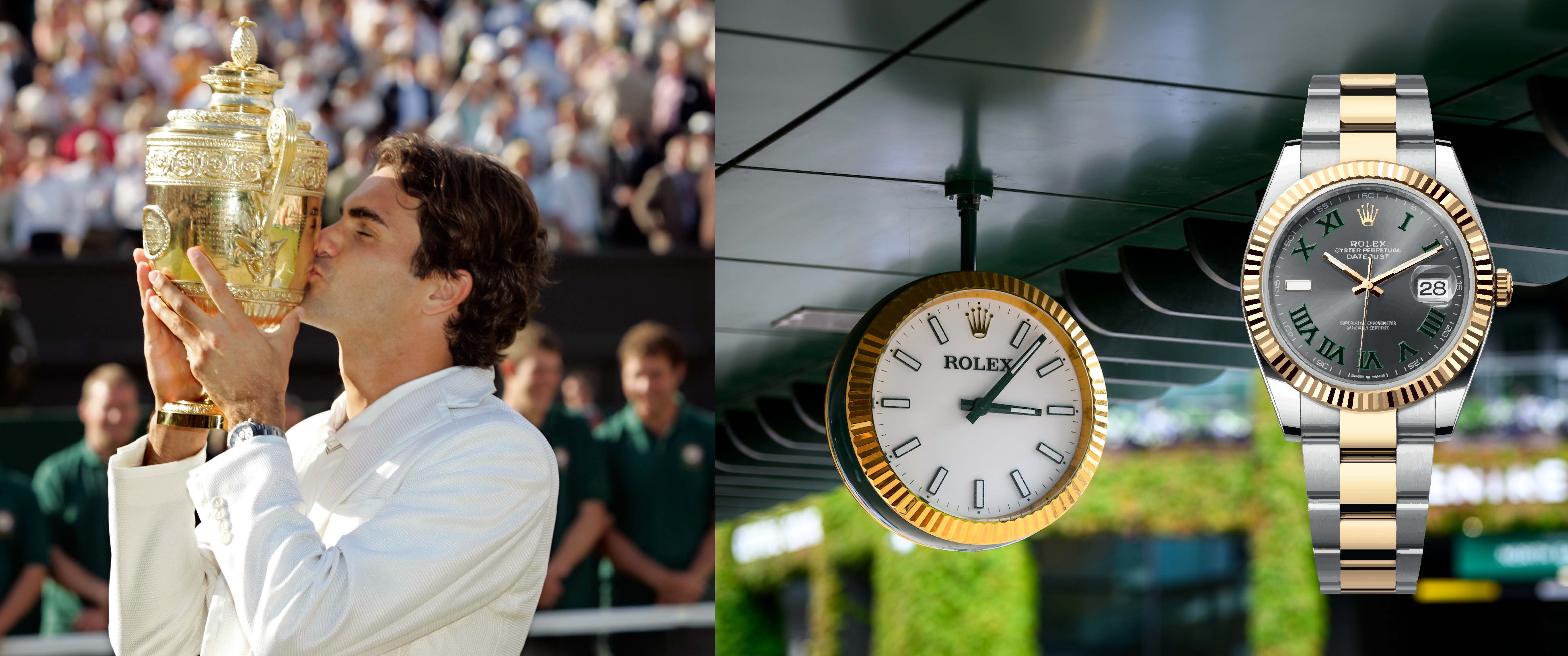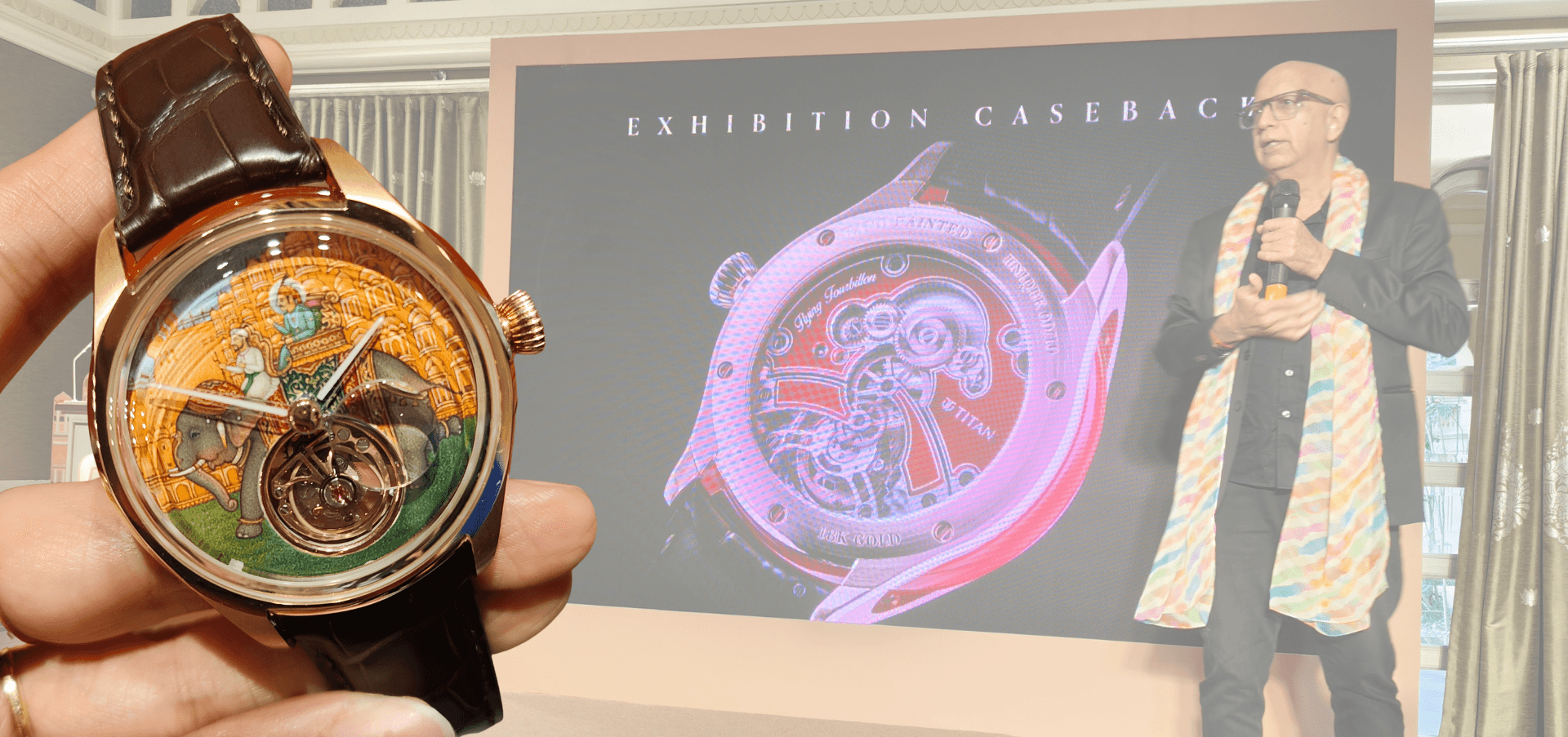The MB&F & L’Epée 1839 Octopod | A Clock Inspired By A World Underwater
Today, in our globalized economy, it is more challenging to recognize a truly unique product due to the prevalence of mass production. But, these Swiss designers have finally done it, with a clock that truly is "for the person who has everything," when even smartwatches seem outdated.
Clocks on tables, mantles, and desks tend to be quiet, tasteful decorations. Unless you're MB&F, the intention of an impressive and typically austere table clock isn't to throw people off their track. The Octopod clock, designed in collaboration with one of Switzerland's finest clock makers, L'Epee 1839, and inspired by octopuses, is a magnificent example of how this independent Swiss luxury watch brand strives to surprise its customers.
The Octopod's creators are the Swiss, who are renowned for their skill in the field of horology and their obsession with accuracy. This high-end timepiece looks like a cross between a slumbering octopus and a sneaky spider. There's more than just telling time with the Octopod octopus clock. It shows that mechanical sculptures can be just as fascinating as other types of art.
Let’s venture into the deep blue seas!
Before the beginning of 2017, most of Max Büsser's watches and clocks were influenced by childhood souvenirs, with themes like space, sci-fi books, and sports-cars. The only exception to this was the steampunk-inspired Legacy Machines. MB&F then presented a novel creation, one that was surprising solely due to the source of its inspiration. The HM7 was a timepiece with an aquatic theme and an extremely eye-catching design (no, really). Octopod, the perfect accessory for your HM7 watch, was designed in partnership with L'Epée 1839 (a long-time partner of MB&F for such pieces) and features the same theme that inspired the company's first automatic watch.
MB&F has previously released spider clocks, robots, and even spacecraft clocks, but this is the first time a clock from the brand has ventured into the deep blue sea. The octopus served as inspiration for the new Octopod clock, which comes in three different iterations. It may be adjusted in height and features eight kinetic legs that are each made up of 31 separate pieces. It has legs that can swivel and move, and a transparent sphere for a head.
Octopuses have the highest intelligence of any invertebrate animal. Several species have been spotted utilizing tools, and experiments with mazes and solving problems have revealed highly developed memory systems. When threatened, octopuses can utilize a multitude of strategies to protect themselves, including highly efficient camouflage (their skin can change color like a chameleon), water with jet propulsion, and the release of a cloud of ink to disguise and confound their attackers.
Where did the inspiration come from?
Let's get one thing straight right off the bat: the name "octopus" originates in Greek, not Latin. Second, octopuses don't have eight legs (or eight arms), but rather two legs and six arms, despite popular belief to the contrary. In order to move along the sea floor, cephalopods use their two rear appendages (legs), while their six arms are used for grasping and manipulating food and other items. They have three sets of arms and legs, yet they only look like one set of each.
The highly clever octopus with its 'eight legs' (more on that below) inspired Octopod's eight articulated legs, and the gimbaled traditional marine chronometer inspired the sphere that is partially gimbaled and houses the clockwork and time display. Furthermore, there is the see-through bubble that reminds one of the bathyspheres from James Cameron's 1989 science fiction masterpiece The Abyss.
To give the manufacturer greater leeway in developing the support framework for the clockwork, MB&F's original concept to L'Epée 1839 depicted the movement 'floating' inside the clear bubble. L'Epée 1839 has, not for the first time (and perhaps not for the last time), exceeded expectations by delivering something even more remarkable than envisioned.
What makes this Octopod so special?
The 159-part, brand-new mechanical movement designed by L'Epee 1839 just for MB&F is housed inside the caseback. Anti-reflective treatment of the glass baseplate gives the clock pieces the appearance of weightlessness. The watch's regulator, a component typically fastened to the mainplate, is carried by the minute hand as it completes one revolution of the dial every hour. The constantly changing direction of the regulator's rotation adds drama and precision to the display.
Octopod, like many other MB&F and L'Epée creations, can stand or crouch because of its eight movable legs. Like a real octopus, Octopod can rest comfortably on the most uneven surfaces by adjusting the height of each leg separately. Like the sea monster it was meant to evoke, this "standing-frame" has a big, see-through spherical "head" on top... The controller and beating center of this tabletop timepiece.
What is the mystery behind the spherical head?
Like the old-fashioned Marine Chronometers, this "glass bubble" can be swiveled. The gimbal on the MB&F Octopod makes it simple to rotate the bubble at any angle, making it possible to read the time inside at the optimal plane.
The beating heart of Octopod, the complete movement, is housed in its "head." Despite the fact that the vertical movement of the Octopod disqualifies it from being a tourbillon according to Abraham-Louis Breguet's original patent, the minute hand regulator's rotation of 60 minutes comes much closer to the original intent of Breguet's invention. In order to compensate for positional mistakes, he intended to spin the escapement of a pocket watch placed vertically in a fob pocket, but tourbillons on wristwatches are always in motion and do not need to revolve through all 360 degrees. In spite of the regulator's perpetually prone posture, the drawbacks associated with a fixed escapement are nonetheless avoided. In addition to its practical benefits, such a structure is also undeniably interesting to see.
As we've seen, Octopod displays the time using two arms (one of which also contains the regulating organ) for the minutes and a third, arrow-shaped arm, in black, to show the hours. The movement, which appears to be floating inside the octopus' "head," is also mysterious when observed closely. In fact, the entire calibre is resting on a glass plate that has been coated on both sides with anti-reflective material, rendering it nearly undetectable. The polished steel components, Geneva stripes, straight brushing, and other hallmarks of MB&F x L'Epée timepieces can be found throughout the movement.
What were the challenges that the brands faced?
Although it appears that the two brands' success can be attributed to their close cooperation and common vision, getting there wasn't easy.
The Octopod's distinctive transparent spherical case and articulated legs were created by L'Epée 1839, Switzerland's finest clock maker, while MB&F was responsible for the concept and design. L'Epée manufactures the majority of the parts, assembles the mechanism, and keeps the clock running for eight days with pinpoint accuracy. L'Epée had two key obstacles to overcome, despite the fact that nothing about this unconventional undertaking was simple. The first challenge was sourcing a supplier for the glass baseplate that could meet the exacting tolerances needed for a timepiece, as most businesses in the glass-processing industry aren't used to the high standards of precision required for horology. The diamond-drilled holes' placement was crucial because the entire mechanism rests on the glass baseplate.
The minute hand's counterweight needed to be adjusted in three dimensions, which presented a further considerable obstacle. Two counterweight screws were initially thought to be sufficient, but it was soon realized that five tiny adjusters were required to ensure that the minute hand was precisely balanced.
Well, MB&F has the world M.A.D associated with them and rightly so. The Octopod stirs up emotions and memories underwater and also transports us to a different world. Well, how I wish I could have this unique clock on my desk table while I wrote this article!
TECHNICAL SPECIFICATIONS
Octopod is available in 3 limited editions of 50 pieces each in black PVD, blue PVD, and palladium (silver).
INDICATIONS AND COMPLICATIONS
Hours, minutes and finely counter-balanced regulator mounted on minute hand
BODY
Dimensions: 28 cm long × 28 cm high (standing), 45 cm long × 22 cm high (crouching)
Weight: 4.2 kg
Frame: Stainless steel, nickel and palladium plated brass
Components (body, legs and sphere): 309 LEGS 8 legs each composed of 31 pieces Articulation released by a button in each leg, can be locked in two positions (standing or extended)
SPHERE
360° rotation in both vertical and horizontal planes with 3 sand-blasted and satin-finished brass rings.
Two Polycarbonate hemispheres joined by a satin-finished three-piece band
MOVEMENT
L’Epée in-house designed and manufactured
Baseplate in transparent mineral glass, anti-reflective coating both sides
Balance frequency: 2.5 Hz / 18,000 bph
Power reserve: 8 days from single barrel
Components movement: 159
Jewels: 19 Incabloc shock protection system protected by mineral glass
Materials: palladium-plated brass, stainless steel and nickel-plated brass
Manual-winding: the double-depth square socket key sets time and winds movement
No articles found

